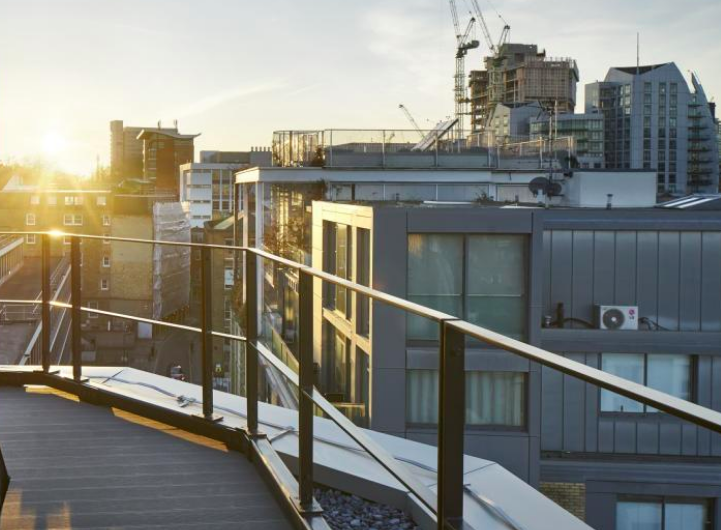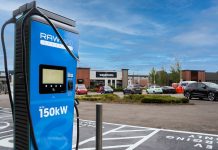A big expansion of solar panels in Britain’s capital city, with buildings retrofitted to reflect summer heat, are the centrepiece of a study by engineering design consultancy Arup, released today.
Commissioned by London mayor Sadiq Khan, the ‘Roofs Designed to Cool’ study forms a key element in the GLA’s Climate Resilience Review announced today.
Average temperatures in the capital are predicted to rise by 2.6°C in summer before mid-century, against averages for the late 1990s.
Mass roof retrofits are needed to protect Londoners, Arup believes. The firm’s work envisages more PV arrays and non-generating reflective panels to cool buildings, at the same time cutting greenhouse gases emitted as owners switch on more air-conditioning.
In his Solar Action Plan three years ago, Khan pledged to increase London’s solar generating capacity to 1GW this decade and to 2GW by 2050. The earlier target now stands at 1.5GW, a huge 15 times advance on the capital’s current deployment, estimated at 100 MWp.
London’s old, its young and its poor suffer disproportionately from excess heat, particularly if they have pre-existing problems such as breathing complaints. As thermometers soared above 40 degrees for two days last July, an estimated 387 Londoners died unexpectedly. People in densely populated neighbourhoods suffered more than others.
Schools and colleges in the capital show big problems and big potential, Arup’s researchers believe. 93% of schools surveyed reported problems with classrooms overheating. Old buildings, ageing infrastructure contributed to strained power distribution.
The mayor’s existing £700,000 Climate Resilient Schools programme is a first step to install more PV and reflective material on school roofs.
Existing showcase roofs making low carbon power in London include the 2012 Olympics’ media centre, now converted to offices. PV panels combine with insect-supporting mosses and greenery to make electricity, cool the structure and boost biodiversity.
Experience with reflective roofs in Toronto and New York is also assessed. Experts from Community Energy London, UCL academics & a building services professional institute reviewed Arup’s assessment.
Thousands of green collar jobs and apprenticeships stand to be created by a “cool roofs for the capital” policy, deputy mayor for environment & energy Shirley Rodrigues believes.
She said: “There is simply no time to waste when it comes to the climate emergency. This new Arup report is an important step forward in our mission to future-proof the capital against the impacts of a changing climate.
“The Mayor has delivered a package of measures to make buildings more energy efficient. We welcome these new findings, and will continue to do all we can to build a better, greener and safer London for all.”
For the engineering firm, director Becci Taylor added: “Urban heat risk is particularly acute in large cities like London. We must align action with adaptations to a changing climate and focus on those most vulnerable to its impact”.
Read the report here.




![Bio Capital will produce [food grade] CO₂ from food waste as the wider CO₂ market experiences major shortfalls](https://theenergyst.com/wp-content/uploads/2025/09/Granville-Eco-Park-anaerobic-digestion-AD-facility-2-218x150.jpg)